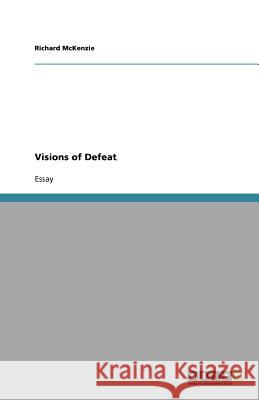Visions of Defeat » książka
Visions of Defeat
ISBN-13: 9783656002239 / Niemiecki / Miękka / 2011 / 36 str.
Essay aus dem Jahr 2008 im Fachbereich Medien / Kommunikation - Film und Fernsehen, Sprache: Deutsch, Abstract: At the end of World War II Germany's cities were in ruins, its people shattered by 6 years of "Total War" and vilified as guilty monsters around the world. Curt Reiss, returned German emigre and American War Correspondent, described the streets of 1945 Berlin as "endless ruins, ...]bombed out tanks, the ubiquitous machine guns and helmets shot to pieces." This fantastic landscape and guilty citizens fascinated filmmakers. They produced films which tried to depict the implications of defeat for Germany and for the victors. The backdrop to these films was the endless ruins and in the foreground the questions of guilt and redemption. This essay examines three films which present Germany's defeat, and how filmmakers dealt with questions of guilt, responsibility, Germany's possible redemption and the affect of victory on Allied soldiers. The films are: Die Morder sind unter uns, 1946, Wolfgang Staudte, Germany, DEFA, A Foreign Affair, 1948, Billy Wilder, US, Paramount, and The Third Man, 1949, Carol Reed, UK, London Films. Elsaesser says that cinema describes its times calling it a "colourful chronotope, which] provides an easily recognizable but also superficial time/space iconography" (Elsaesser, 2003, 33). Neorealism is suggested by Ezra as the main Post-War genre used to describe the destroyed cities, shattered lives and the difficulties of re-integrating former soldiers back in to society, saying "the privations suffered by populations of Europe were both captured and transformed into the first great genre to emerge at the end of the war, Italian Neorealism" (Ezra, 2004,9). It is clear however that in the films under discussion this is not the principle style used by Staudte, Wilder and Reed."











